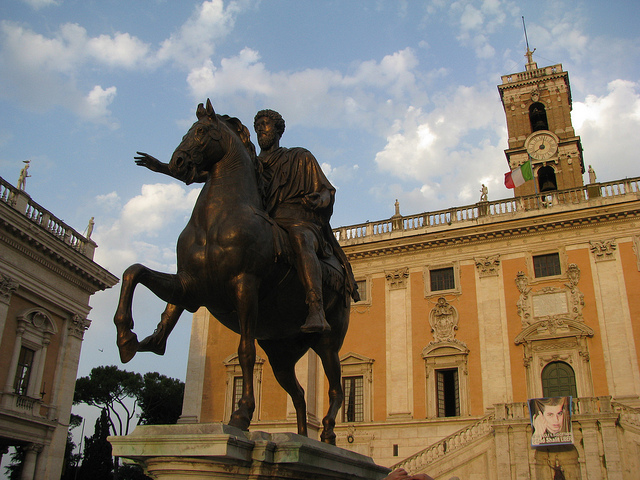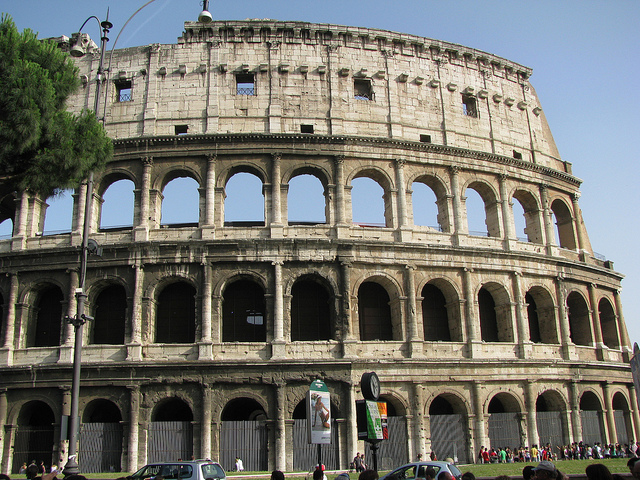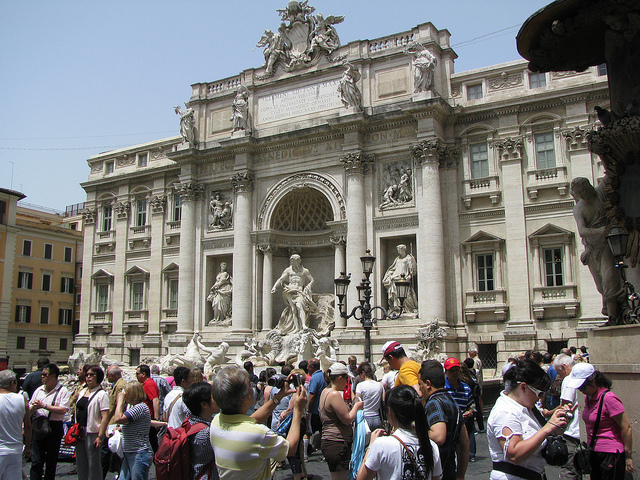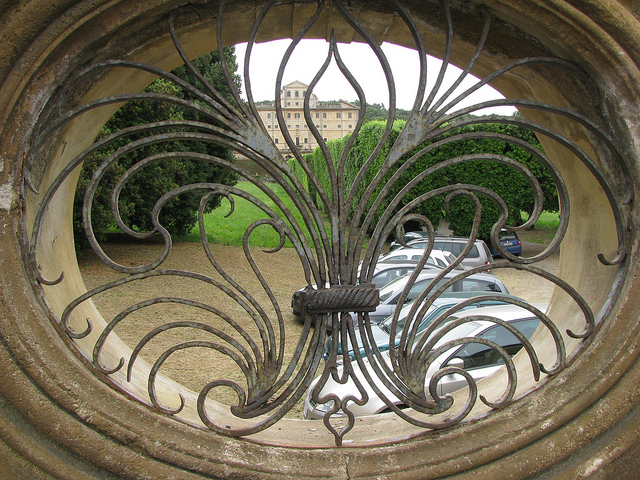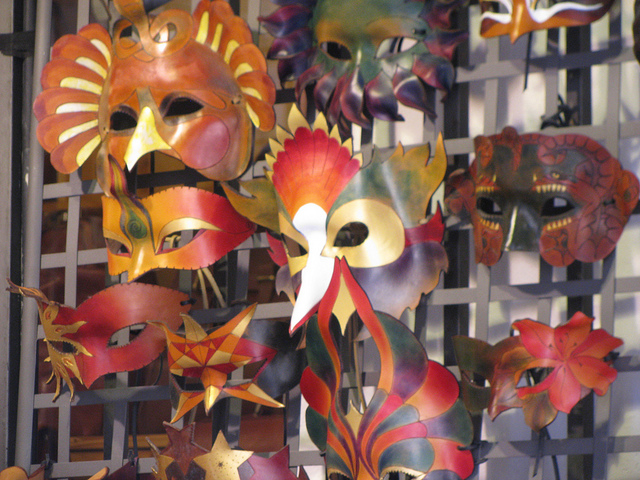After a quick bite of pizza we continued onwards on cobble-stoned streets, climbing the Janiculum Hill (in Italian: Gianicolo). We passed by the Fontana dell’ Acqua Paola, an enormous fountain that is the end point of an aqueduct that was originally built by Emperor Trajan in Ancient Roman times. The fountain itself was built in 1612 and is also referred to as “Il Fontanone” (“the huge fountain”), due to its size. The shape of this fountain later inspired Rome’s famous Trevi Fountain.

The gigantic Fontana dell’ Acqua Paola
On we continued to the top of the Gianicolo, which is not considered one the Seven Hills of Rome because it was on the west side of the Tiber River and outside of the ancient city’s boundaries. Towards the east there is a phenomenal view over downtown Rome, and the Piazza Garibaldi has a monument to Giuseppe Garibaldi, the Italian national hero who unified Italy.

The statue of Garibaldi
Leaving this scenic spot behind we came down on the north side of Gianicolo and ended up right in the Vatican, an independent city state and the seat of the Roman Catholic Church. We cycled up to St. Peters Basilica where Roberto gave us an hour and a half to explore the Vatican area by ourselves. About 1000 people live in the Vatican, mostly priest, nuns and guards. The 800 official citizens make this the nation with the smallest population on the planet.

The Swiss Guard protects the Pope
I planned to venture inside St. Peter’s and was moving along the lineup when I realized that there were guards checking the attire of all the visitors. No bare shoulders were allowed, and many of the tourists were turned away from entering the church. Given that I was wearing a racer-back athletic shirt for my bike ride, it was clear that I would be barred as well.

St. Peter’s Bscilica is enormous
But there was no problem, because so many of the surrounding souvenir stalls sell t-shirts and big scarves that will easily cover up the offending bare shoulders. I purchased a souvenir t-shirt of Rome for my husband and pulled it over my head and was admitted to St. Peter’s without a problem.

The Piazza San Pietro was laid out by Bernini between 1656 and 1667
St. Peter’s Basilica is truly an awe-inspiring building. Not surprisingly it is called the “greatest church of all Christendom”. A shrine was erected here on the site of St. Peter’s tomb in the 2nd century AD and the first great basilica was completed in 349 AD. The cornerstone for today’s structure was laid in 1506 and the huge church was finally completed 120 years later.

St. Peter’s Basilica is a masterpiece
The ornately painted dome is a premier example of Renaissance art by Michelangelo. The nave is an astounding 218 m (715 feet) long and there are many side altars and niches. The Baldacchino, created by Bernini, resembles a pavilion and is claimed to be the largest piece of bronze in the world. The size and the ornamentation of this huge sacral building are simply overwhelming.

The dome of St. Peter’s was designed by Michelangelo
After our brief individual excursion our cycling group congregated again and Roberto took us to the next stop: the Castel Sant’Angelo, the Ancient Roman mausoleum to Emperor Hadrian that became a medieval fortress and refuge for various popes. We admired the ancient round castle, when Alan’s chain detached. Roberto and Alan spent quite some time to try to fix the bicycle again, but to no avail.

We have bike problems, but Ciro will arrive shortly with a replacement bike
